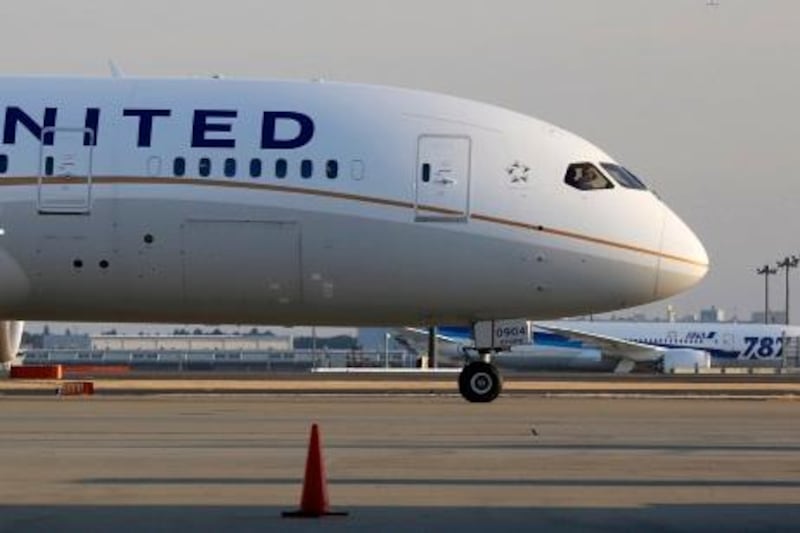All 50 Boeing 787 Dreamliners currently in service worldwide were grounded yesterday over fears that the airliner's battery-powered auxiliary power system could become a fire hazard.
The United States federal aviation authority (FAA) issued a directive to temporarily ground the six airliners in service in the US pending safety checks. Regulators in Europe, India, Japan, and Chile, whose airlines also operate the 787, immediately followed suit, and yesterday Qatar Airways, which operates five 787s also announced it had removed the airliners from service.
Yesterday afternoon, Ethiopia, whose national carrier Ethiopian operates four 787s, said it would also be following the US lead.
The directives follow a series of incidents involving the 787, culminating in an emergency landing by an All Nippon Airways flight on Wednesday.
Pilots had reported smoke in the cockpit shortly after takeoff. Japanese investigators later discovered that the airliner’s lithium-ion battery pack had been distorted by overheating and was leaking inflammable material.
“As a result of an in-flight Boeing 787 battery incident earlier today in Japan, the FAA will issue an emergency airworthiness directive to address a potential battery fire risk in the 787 and require operators to temporarily cease operations,” said the FAA statement.
"Before further flight, operators of US-registered Boeing 787 aircraft must demonstrate to the FAA that the batteries are safe.
"The FAA will work with the manufacturer and carriers to develop a corrective action plan to allow the US 787 fleet to resume operations as quickly and safely as possible."
The in-flight Japanese battery incident followed an earlier 787 battery incident that occurred on the ground in Boston on January 7.
“The battery failures resulted in the release of flammable electrolytes, heat damage, and smoke on two Model 787 airplanes. The root cause of these failures is currently under investigation. These conditions, if not corrected, could result in damage to critical systems and structures, and the potential for fire in the electrical compartment,” said the FAA.
Last Friday, the FAA announced a comprehensive review of the 787’s critical systems with the possibility of further action pending new data and information.
It also plans to check that 787 batteries and the battery system on the aircraft are in compliance with the special condition the agency issued as part of the aircraft’s certification.
“When the FAA issues an airworthiness directive, it also alerts the international aviation community to the action so other civil aviation authorities can take parallel action to cover the fleets operating in their own countries,” said the FAA.
The 787, which has been in service since October 2011, has also suffered fuel leaks, a cracked cockpit window, brake problems and issues with its electronics systems. Manufacturing problems had previously delayed its launch by three years.
Its next-generation design uses carbon-composite construction, which makes it very light. But its sophisticated electronic system is power-hungry. So to cut weight further, Boeing installed lithium-ion batteries that are lightweight and can be moulded to the shape of the aircraft’s hull.
They can also be highly inflammable and fires, when they occur, cannot easily be contained by existing onboard extinguisher systems.
Boeing has invested heavily in the 787, and needs to sell 1,000 over the next decade to break even. So far, sales have topped almost 800 to airlines all over the world, including Etihad Airways, which is due to begin taking delivery of its 41 787s next year.
Boeing shares were down almost 3.4 per cent at $74.34 in late trading on Wall Street yesterday.
Scott Hamilton, an analyst at Leeham, an aerospace consulting firm in Seattle where the 787 is assembled, said having the airliner grounded “is about the worst thing that can happen” to Boeing.
“If this goes beyond just a bad design of a battery and you have to redesign some systems leading to the battery, and look at why didn’t safeguards on this thing work, you get a ripple effect,” he added. “Every day … is an added day of delivery delays.”
The Boeing chairman, president and chief executive Jim McNerney committed the company to cooperating fully with the FAA.
“The company is working around the clock with its customers and the various regulatory and investigative authorities. We will make available the entire resources of The Boeing Company to assist,” he said. “We are confident the 787 is safe and we stand behind its overall integrity. We will be taking every necessary step … to return the airplanes to service.”
Qatar Airways’ 787s currently fly to London, Zurich, Munich, and on some intra-Arabian Gulf routes.
“In light of recent events surrounding the Boeing 787 Dreamliner worldwide, we are actively working with Boeing and the regulators to restore full customer confidence in the 787,” said the Qatar Airways chief executive Akbar Al Baker. “Qatar Airways will resume 787 operations when we are clear that the aircraft meets the full requirements of the airworthiness directive and our standards which assure the safety of our passengers and crew at all times.”
[ dblack@thenational.ae ]





